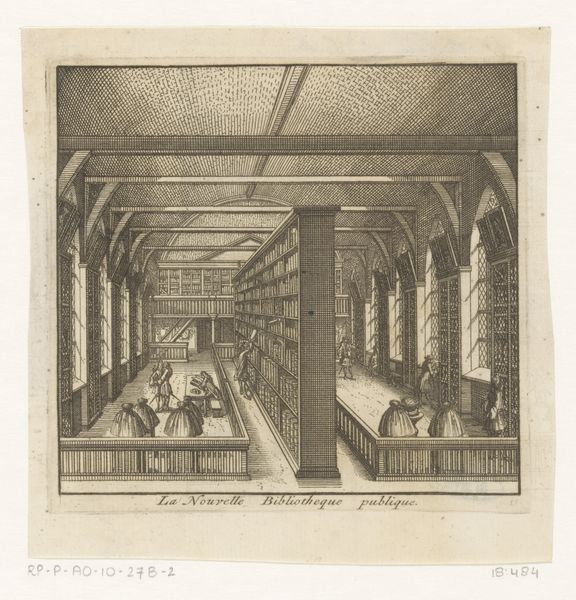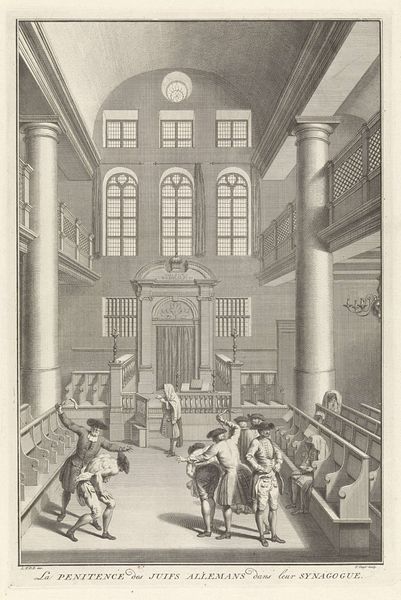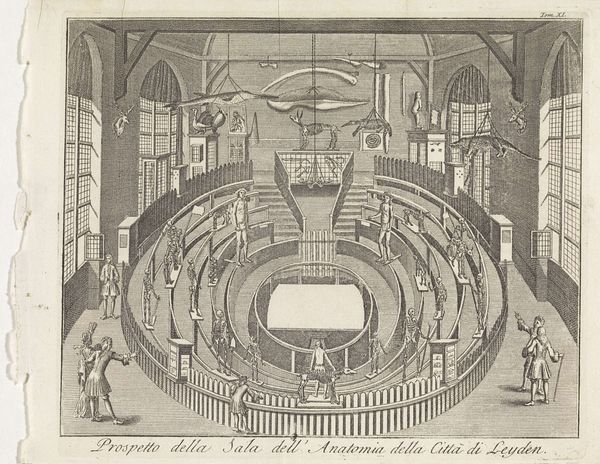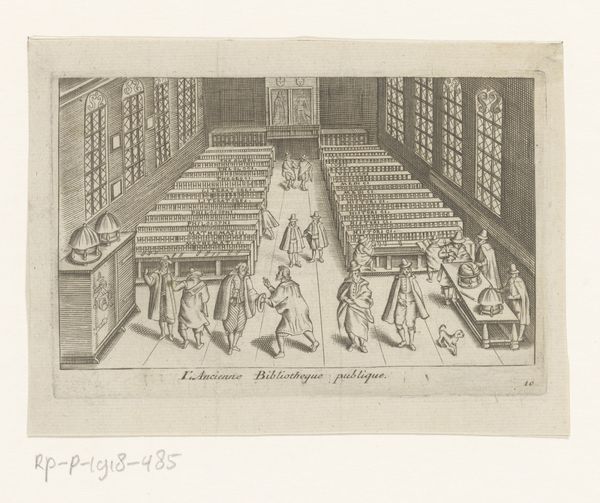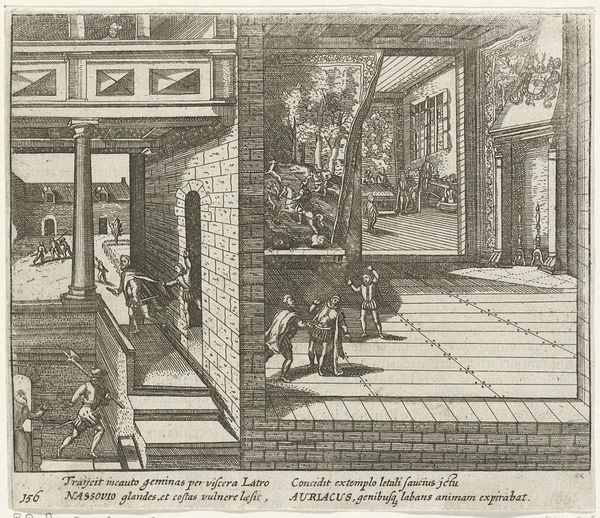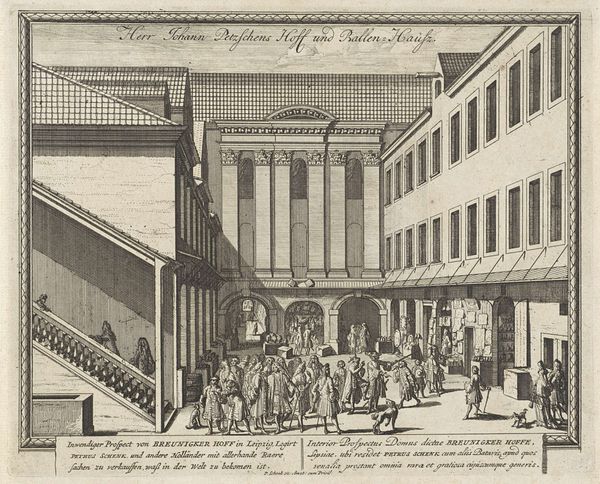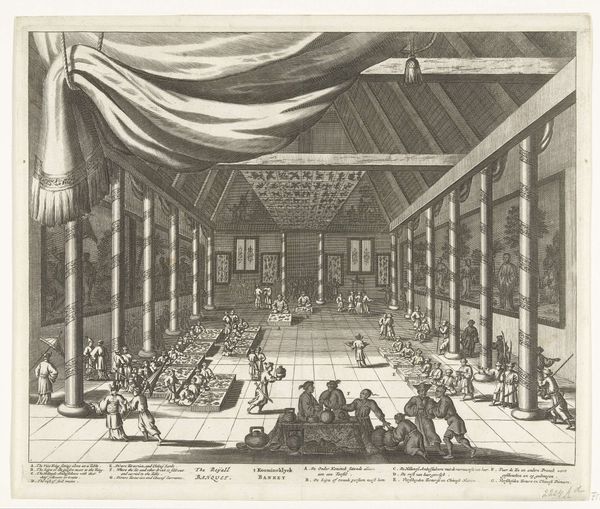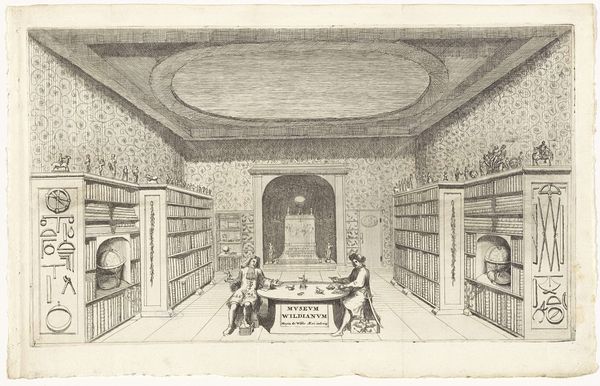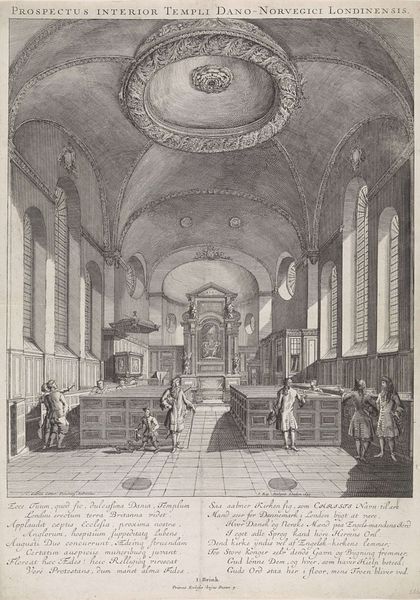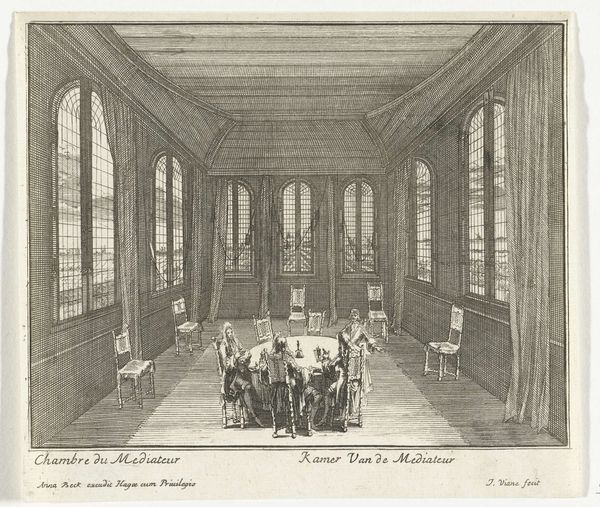
print, etching, engraving, architecture
#
architectural sketch
# print
#
etching
#
landscape
#
11_renaissance
#
engraving
#
architecture
Dimensions: height 330 mm, width 403 mm
Copyright: Rijks Museum: Open Domain
Curator: This print from 1610 depicts the Bibliotheek van de Universiteit van Leiden, as captured by Willem van Swanenburg. I find it quite striking, even now. Editor: Indeed! At first glance, I see this densely detailed interior that almost vibrates with intellectual energy. It makes me think about the politics of knowledge during this time and how spaces like these both included and excluded people. Curator: Swanenburg, of course, wasn't simply documenting; the university itself commissioned the print. How might that inform our understanding of its representation of knowledge and access? It depicts rows upon rows of books, organized by discipline; we can read the titles marked, like ‘Theology,’ ‘Literature,’ ‘Philosophy'. This suggests an encyclopedic approach to organizing thought that reflects the broader humanist project. Editor: Absolutely, but that careful order is interesting considering the period's tumultuous climate. We must question who had access to that organized thought. Access to knowledge was heavily regulated and typically reserved for men of certain social classes. What message does its clear labeling send about controlled dissemination? Curator: It reflects both aspirations and the very real constraints of the early 17th century. We also see gentlemen inside conversing, presumably engaged in scholarly activities. Their attire and bearing suggest a world of privilege. Does that inform your thoughts regarding current inequities surrounding intellectual institutions? Editor: Precisely. Today's open-access movements, decolonization of curriculums, all attempt to wrestle with some of these persistent inequalities, to confront whose voices and histories get preserved and prioritized within library collections. Considering how deeply these institutions are steeped in historical biases, it is interesting to ponder the power dynamics displayed. Curator: I agree. As an official image, the print perhaps aimed to project an image of order, stability, and erudition—a visual argument for the University's importance in society. It makes me consider whether these buildings merely housed collections or shaped entire schools of thought through subtle design. Editor: The depiction provides valuable information concerning 17th century socio-intellectual values. As a modern viewer I find this makes us confront critical discussions on institutional privilege within historical and contemporary contexts. It shows how deeply physical and structural hierarchies influence what counts as “knowledge.” Curator: Seeing that contrast is powerful. Editor: Indeed, let’s be mindful of those subtle inequalities that underpin the world around us.
Comments
No comments
Be the first to comment and join the conversation on the ultimate creative platform.

